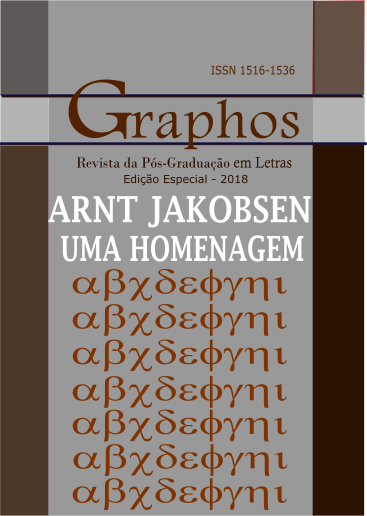Eye movement behaviour across four different types of reading task
Keywords:
Leitura, Tradução, Compreensão, Produção, Rastreamento ocularAbstract
Um grupo de seis tradutores profissionais e outro de seis estudantes de tradução leram quatro textos jornalísticos sobre o mesmo assunto enquanto tiveram seus movimentos oculares rastreados. Os dois primeiros textos foram lidos com dois propósitos de leitura distintos, quais sejam, (a) para compreensão e (b) para tradução subsequente. Cada um dos outros dois textos foi lido para que houvesse, simultaneamente, (c) uma tradução à prima vista e (d) uma tradução escrita. Observou-se que os tradutores profissionais foram mais rápidos que os estudantes. Em ambos os grupos, o tempo de execução da tarefa, a frequência de fixações, o tempo total de olhar (gaze) na tela e a duração média das fixações revelaram uma progressão consistente e linear de uma tarefa para a outra. Na última tarefa, relativa à tradução escrita, constatou-se que a distribuição da atenção visual foi maior no texto-fonte entre os estudantes e maior no texto-alvo entre os tradutores profissionais.
Downloads
References
BERTRAM, R.; HYÖNA, J. The length of a complex word modifies the role of morphological structure: evidence from eye movements when reading short and long Finnish compounds. Journal of Memory and Language, v. 48, p. 615-634, 2003.
FRISSON, S.; RAYNER, K.; PICKERING, M. J. Effects of contextual predictability and transitional probability on eye movements during reading. Journal of Experimental Psychology: Learning, Memory and Cognition, v. 31, p. 862-877, 1999.
HYÖNA, J.; RADACH, R.; DEUBEL, H. The mind’s eye. Cognitive and applied aspects of eye movement research. Amsterdã: Elsevier, 2003.
JAKOBSEN A. L. Translation drafting by professional translators and by translation students. Traducción & Communicación, v. 3, p. 89-103, 2002.
JUHASZ, B. J.; RAYNER, K. Investigating the effects of a set of intercorrelated variables on eye fixation durations in reading. Journal of Experimental Psychology: Learning, Memory and Cognition, v. 29, p. 1312-1318, 2003.
JUST, M. A.; CARPENTER, P.A. A theory of reading: from eye fixations to comprehension. Psychological Review, v. 87, p. 329-354, 1980.
KLIEGL, R. et al. Length, frequency, and predictability effects of words on eye movements in reading. European Journal of Cognitive Psychology, v. 16, p. 262-284, 2004.
RADACH, R.; KENNEDY, A.; RAYNER, K. Eye movements and information processing during reading. Hove: Psychology Press, 2004.
RAYNER, K. Eye movements in reading and information processing: 20 years of research. Psychological Bulletin, v. 124, p. 372-422, 1998.
RAYNER, K.; DUFFY, S. A. Lexical complexity and fixation times in reading: effects of word frequency, verb complexity, and lexical ambiguity. Memory and Cognition, v. 14, p. 191-201, 1986.
RAYNER, K.; POLLATSEK. A. The psychology of reading. Englewood Cliffs, N.J.: Prentice Hall, 1989.
WILLIAMS, R. S.; MORRIS, R. K. Eye movements, word familiarity, and vocabulary acquisition. European Journal of Cognitive Psychology, v. 16, p. 312-339, 2004.







